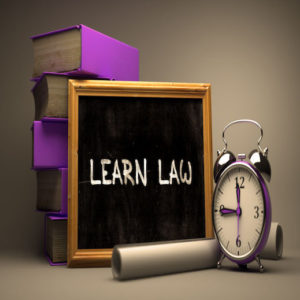By Dr. Ken Broda Bahm:

We all know what good teaching looks like. We remember it from school, or perhaps even from our own time as teachers. Good teaching breaks things down and makes them simple, at least at the start. Good teaching uses concrete and vivid examples and illustrations. Good teaching engages and adapts to the learners. Now, contrast that with the moments at the end of a trial when the legal instructions are given to the jury. There’s no comparison. The judge sits on the bench giving a bald recitation of a dense text: no illustration, no adaptation, no engagement — it is the opposite of teaching. It protects you in the event of an appeal, but it is pretty unlikely to give jurors a useful, accurate, and memorable understanding.
As many have observed, that is doing a disservice to those who sacrifice their time for jury duty. And there may be a better way. A recent article by Fox Rothschild partner, Jeffrey M. Pollack, in the New Jersey Law Journal, carried by Law.com, is entitled “Helping Juries Succeed.” Along with a number of other suggestions, Mr. Pollack argues that parties should be open to the idea of the judge taking a more active and conversational approach in explaining the instructions to the jury, like a teacher would, instead of just reciting the pattern instructions. There are obviously some protections that would be needed, but I think that is an idea worth trying. In this post, I’ll share Mr. Pollack’s proposal and rationale, and also supplement it with some of my own ideas for harnessing the educational advantages while still protecting the case on appeal.
Recitation of Law Isn’t working
As outlined by Jeffrey Pollack, the magic of the American jury is that, collectively speaking, juries generally get everything. They don’t miss the facts. But where juries fail, it is often because they miss the law. And a growing body of research suggests that legal instructions are unhelpful more often than not. Pointing to several studies, he notes, “Jurors’ understanding of the instructions is little better than if they had received no instructions at all.”
The safe bet, of course, is to rely on the pattern instructions that have stood the test of time. The problem is that the pattern instructions are crafted with an eye toward just that: They’re aimed at surviving appeal, and not crafted with an eye toward generating understanding. “We fail juries for a very simple reason,” Pollack concludes, “Jury instructions are tedious, boring, and incomprehensible.”
So Let’s Try Teaching
Instructions don’t fail because the law itself is incomprehensible. After all, think of all of the half-ready, first-year law students who nonetheless end up understanding the law. A visit to any of our Inns of Court will convince you that, by and large, judges aren’t just effective, they’re often genuinely gifted communicators, many with their own experience as teachers and/or trial lawyers. Speaking of the majority of judges, at least, if they were allowed to explain it to the jury, they would be able to do so quite effectively.
So why not let them do it? Mr. Pollack’s recommendation is worth quoting at length:
Consider not using the standard jury instruction, and let the trial court actually talk with the jury. Although there is no doubt some risk that the trial court may misstate a standard, a plain language discussion with the jury will help them really understand their job. Doubtless, both lawyers and the court may be concerned about this approach but the entire discussion with the jury is recorded, so the worst that happens is that: (1) the jury actually understands the instructions, or (2) there is a risk of mistrial because the court inadvertently makes a misstatement. Is that risk worse than having the jury not understand the instructions at all? This is something that trial counsel and the courts need to consider.
The risk of a mistrial based on a flawed instruction is obviously a big risk. But that risk is not something that simply needs to be accepted. There are alternative ways of guarding against bad information on the law:
One, trial counsel could weigh in on judge’s planned outline, prior to it being extemporaneously presented to the jury.
Or two, if the law is inordinately complex, or a minefield of potential objections, then video-record the trial judge providing that instruction conversationally in simple language, then review and edit if there are successful objections to any of the content.
Or three, trial counsel could make selective use of bench conferences midstream during the presentation of instructions in order to provide a live correction of any problems prior to the deliberations.
In that last option, the trial lawyers will need to be judicious and not risk coming across as trying to slant or to obstruct the jurors’ legal education.
But at the end of the day, that is what it should be: education. Not box-checking CYA meant to be understood by the appellate bench, but genuine teaching meant to make jurors comfortable and accurate when it comes to using the law to resolve a dispute.
______
Other Posts on Legal Instructions:
- Beware of Instructions that Highlight but Don’t Correct
- Embrace Plain English Jury Instructions
- Play it Safe with Clear Instructions (Especially on Juror Social Media Use)
- Take a Schematic Approach to Jury Instructions
______